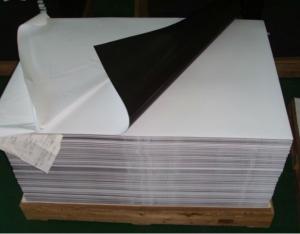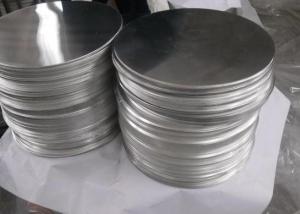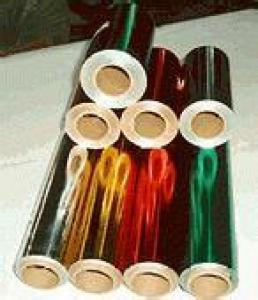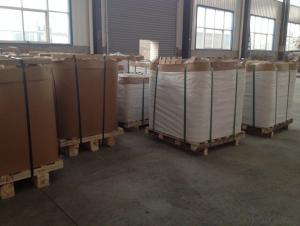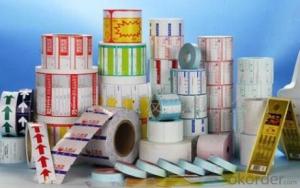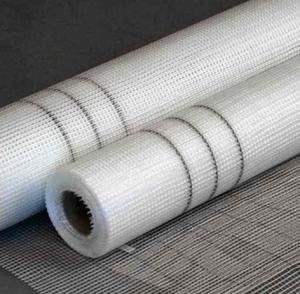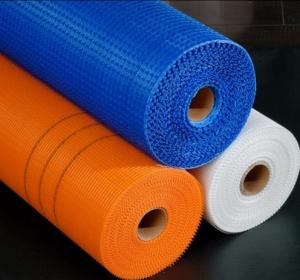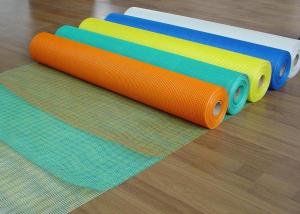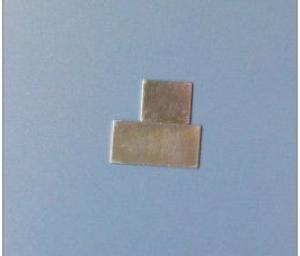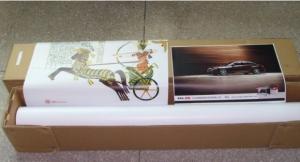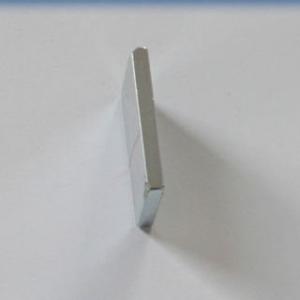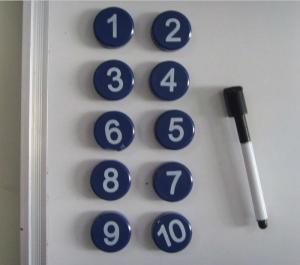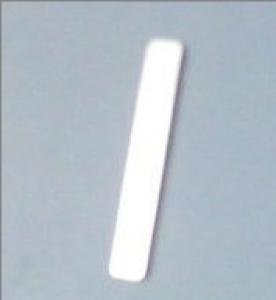Wide Format Printing Media Magnetic Sheet with White Glossy PVC
- Loading Port:
- China Main Port
- Payment Terms:
- TT or LC
- Min Order Qty:
- 60 Rods or more roll
- Supply Capability:
- 200 Tons per Month or more roll/month
OKorder Service Pledge
Quality Product, Order Online Tracking, Timely Delivery
OKorder Financial Service
Credit Rating, Credit Services, Credit Purchasing
You Might Also Like
Specifications
1.magnetic sheet for inkjet printing;2.ourdoor advertising magnet;
3.1000mm*0.5mm*620mm;
4.pre cut magnet;
magnetic sheet with white glossy vinyl;
magnetic sheets,
ferrous sheet,
steel powder sheet
1.laminations:vinyl,water-based PP film,adhesive,artpaper,PE foam adhesive,
2.magnetic sheet thickness:0.3mm,0.4mm,0.75mm,1.0mm,
3.width:620mm,1000mm,1200mm,1220mm,
4.common size:620mm*0.5mm*20m,30cartons on one pallet.
5.package:one roll into one carton,
6.application:advertising consumables,pop display,promotion signs,etc.
- Q:is there a temperature when the structure of an alloy changes so that it displays magnetic properties or can become made made a magnet easier?
- If I remember correctly, heating a metal which displays magnetic properties will de-magnetise it. The temperature needs to be quite high, but not close to melting point. The theory is that heating causes the magnetic particles within the metallic structure to lose their alignment with each other and so weakens their magnetic effect. Iron and its alloys display magnetic properties. Any non-magnetic metal, aluminium or copper for example, unless alloyed with iron in substantial proportion will remain non-magnetic at any temperature. There is no elevated temperature at which non-magnetic materials become magnetic, although I believe that, for some materials, the reverse is true. They can display magnetic properties when cooled to a very low temperature.
- Q:How to measure the damage of nano material attached to metal surface?
- Turtles spawn at the seaside in Florida, but young turtles can swim and swim near Britain to find food. Finally, the growing turtle returns to spawning on the beach in Florida. It takes about 5~6 years to go back and forth. Why can a turtle walk thousands of kilometers? They rely on nano magnetic material in the head to navigate accurately.
- Q:Which album do you prefer?BA: Is Walmart the only store you can buy AC/DC albums?
- Death Magnetic but both did the job. BA: I think so
- Q:How does the reluctance of air in magnetic circuit compare with the resistance of air in electric circuit ?
- Magnetic reluctance is analogous to electrical resistance, and is in units of At/W (Ampere turns per weber). There is an equivalent of Ohms law for magnetic circuits, where: Reluctance Magneto Motive Force / magnetic flux Where: Reluctance is in units of ampere turns per weber. MMF is in ampere turns. magnetic flux is in webers Reluctance is proportional to LengthOfPath / Permeability x CrossSectionalArea. The permeability of air is 1, the permeability of magnetic materials up to a few thousand. Using realistic figures of 0.04m path and area of 0.0001m^2. Air, 40 Iron, 0.16 Therefore air is 250 time the magnetic reluctance of iron. In the electrical case air is totally non conductive (except when it becomes ionised - breaks down). The resistance ratio between air and a metallic conductor approaches infinity.
- Q:Why and how are objects like steel, iron, cobalt, nickel, attracted to a magnet?
- This is because these are metals. When metals are near an electric force the positive charge pushes all the protons away from that side of the substance and therefore only electrons left which are negative. Opposites attract so the two metals come together.
- Q:how does electricity or magnet make iron / steel magnetic?
- Iron and steel are both 'ferrous' materials . this means that they have particles which can be affected by a magnetic field. The particles tend to align themsleves with the magnetic 'flow' . kind of like leaving a boat tied to shore but in a current. Eventually, the bow will point upstream toward the flow (and the point to which it's tied!), while the stern points downstream. Once the particles get aligned, they tend to stay that way . thereby creating their own 'magnetic' effect. Some materials have more ferrous particles than others, which is why some are easier to magnetize than others! By the way - electrons are not 'magnetic' particles. They are subatomic particles that carry an overall negative electrical charge. Electrons don't get influenced by magnetic fields.
- Q:I've heard that NdFeB is very easy to corrode. Is that true?
- The bonded magnet is isotropic, i.e. whether the magnetization along any direction, the strength of the magnetic field are the same (and shape), and sintered magnet is anisotropic, in the production process of sintered magnets, a procedure called the magnetic field orientation, then only when magnetizing orientation along the magnetizing direction only high magnetic field strength the other direction, there is no magnetic magnetization. Theoretically, the magnetic remanence of the isotropic is 1/2 of the residual magnetic anisotropy, and since the magnetic energy product is proportional to the square of the remanence, the isotropic magnetic property is only 1/4 of the anisotropy.
- Q:The problem is as follows: There is a point magnetic dipole embedded at the center of a sphere (radius R) of linear magnetic material of permeability μ. What is the magnetic field inside the sphere?I know that this problem has been solved in many books.But I am trying a different method. Since the magnetic field of a magnetic dipole takes the same form as electric field of an electric dipole, I calculated the electric field inside a sphere (of linear dielectric material of permittivity ε) having a point electric dipole embedded at the center.And then just replaced ε by 1/μ and the electric dipole moment ‘p‘ by the magnetic dipole moment ‘m‘ and of course epsilon naught by one over mu naught. But the answer does not match the correct answer.Is this method of mine wrong?
- The magnetic dipole will magnetize the sphere. This magnetization will create a field of its own. We need to find the net field, that is the resultant field due the dipole and the magnetization of the sphere. My answer is almost the same as that given in Griffiths text except that in the denominator of the second term mu naught and μ are interchanged in my answer
- Q:What materials affect the attraction of magnets?
- problem-free is a wave of electric powered and magnetic fields. even as degree at a fixed area alongside the direction of light, the electric powered powered container amplitude will bypass up and down in a sinusoidal way. So will the magnetic filed factor. an electric powered powered cost is both inspired via, and is a source of -electric powered fields. even as an electric powered powered cost is positioned in an electric powered powered container, it feels a pressure. Newtons 0.33 regulation (action an reaction) signifies that on the similar token - the source of the electric powered powered container will adventure the similar (yet opposite pressure that the cost is activating upon it. for this reason - an electric powered powered cost can deflect an issue-free beam. Magnets are both inspired via, and are a source of - magnetic fields. Analogously to the above description related to electric powered expenditures and fields - problem-free beams might want to nicely be deflected via magnets. the version between the truly some sorts of problem-free (e.g. IR, UV etc) is the how regularly does their electric powered and magnetic fields replace in a 2d. operating social gathering, shrink frequencies - IR, more advantageous frequencies - UV Sound is likewise a wave phenomena - yet of a diverse nature. The magnets in audio device have not something to do with the magnetic fields the characterize an issue-free beam.
- Q:Please help me, I‘ve looked online, and I can‘t find anything. I have an assessment in a few weeks, trying to get as much revision in as possible, and this would really help! I‘m counting on you! xx
- Common ones are iron, nickel, cobalt and their alloys, some compounds of rare earth metals, and a few naturally-occurring minerals such as lodestone. Tungsten Cesium Aluminium Lithium Magnesium and Sodium are also para-magnetic materials (which means they do get attracted by magnets, but only a little bit. That's most of them.
We are a leading manufacturer and supplier of magnetic products, such as magnetic materials, reductive iron powder and injection magnets. We take pride in a number of senior engineers and technicians with over 20 years of experience in this sector as well as advanced equipment and the top-ranking management system, which make it possible for us to provide our customers with high quality products, competitive prices and first-class service. We sincerely hope to establish long-term business relationships with customers from at home and abroad on the basis of equality and mutual benefits and seek common development.
1. Manufacturer Overview |
|
|---|---|
| Location | Guangdong,China (Mainland) |
| Year Established | 2009 |
| Annual Output Value | |
| Main Markets | 11.11% North America 11.11% South America 11.11% Eastern Europe 11.11% Southeast Asia 11.11% Oceania 11.11% Mid East 11.11% Eastern Asia 11.11% Western Europe |
| Company Certifications | license 1 |
2. Manufacturer Certificates |
|
|---|---|
| a) Certification Name | |
| Range | |
| Reference | |
| Validity Period | |
3. Manufacturer Capability |
|
|---|---|
| a)Trade Capacity | |
| Nearest Port | |
| Export Percentage | 91% - 100% |
| No.of Employees in Trade Department | |
| Language Spoken: | English, Chinese, Japanese |
| b)Factory Information | |
| Factory Size: | 5,000-10,000 square meters |
| No. of Production Lines | 6 |
| Contract Manufacturing | OEM Service Offered |
| Product Price Range | |
Send your message to us
Wide Format Printing Media Magnetic Sheet with White Glossy PVC
- Loading Port:
- China Main Port
- Payment Terms:
- TT or LC
- Min Order Qty:
- 60 Rods or more roll
- Supply Capability:
- 200 Tons per Month or more roll/month
OKorder Service Pledge
Quality Product, Order Online Tracking, Timely Delivery
OKorder Financial Service
Credit Rating, Credit Services, Credit Purchasing
Similar products
New products
Hot products
Related keywords
